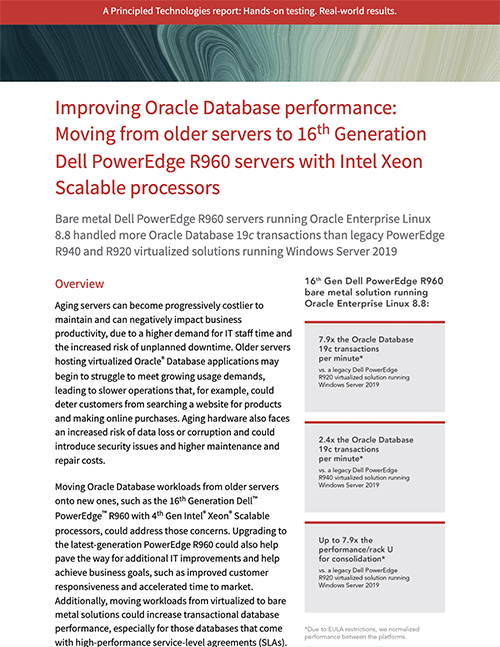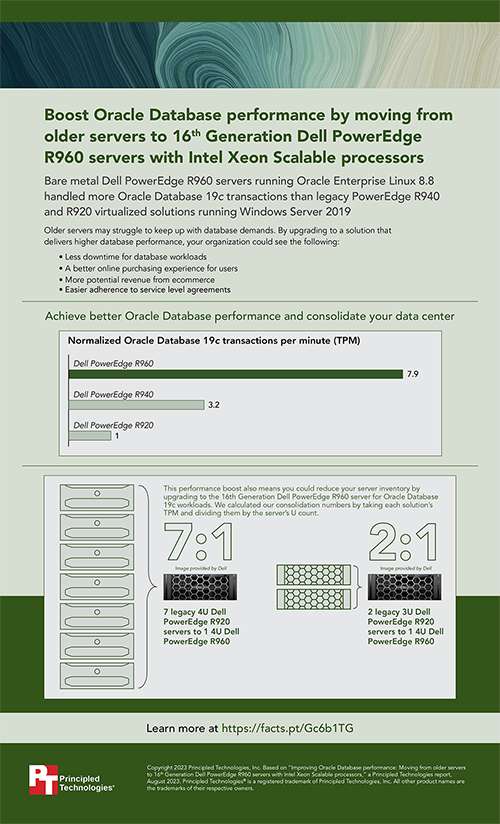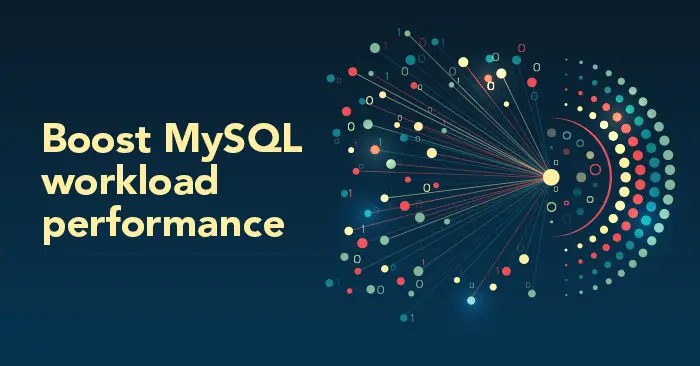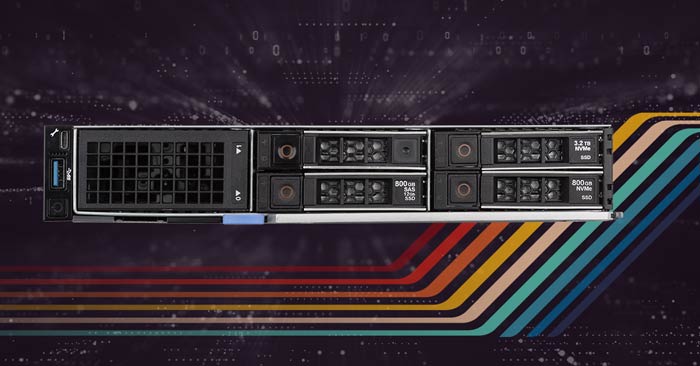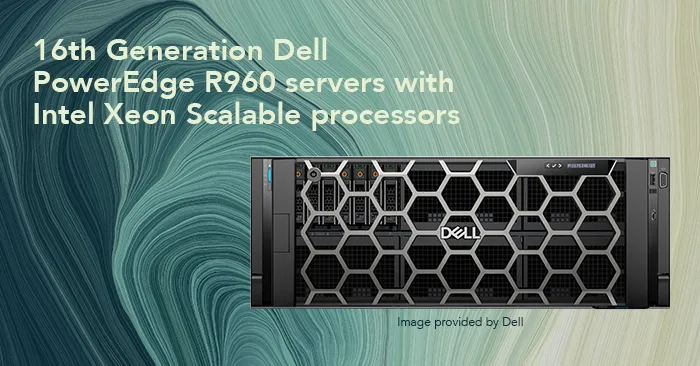
For organizations of all sizes, data center hardware upgrades can involve significant investments of time and money. The right upgrades can pay off big time, however, by boosting key metrics like database performance and customer satisfaction while lowering maintenance costs and the risk of expensive downtime. We all know that some upgrades make a bigger difference than others, so relevant performance comparisons can give leaders confidence that they’re making upgrade decisions that will generate worthwhile returns.
To see how one generational upgrade path can improve a critical function like transactional database throughput, we compared the performance of a 16th Generation Dell PowerEdge R960 bare metal solution running Oracle Enterprise Linux 8.8 against the performance of two older generations—the PowerEdge R940 and PowerEdge R920—running Windows Server 2019 in virtualized environments. We found that the PowerEdge R960 processed up to 7.9 times the Oracle Database 19c transactions per minute (TPM) that the PowerEdge R920 server handled and up to 2.4 times the TPM the PowerEdge 940 produced. When we analyzed these results from the perspective of potential server consolidation, we found that the PowerEdge R960 server delivered 7.9 times the TPM per rack unit than the PowerEdge R920 solution and 1.8 times the TPM per rack unit than the PowerEdge R940 solution. Based on these ratios, organizations maybe able to use just one Dell PowerEdge R960 to consolidate the work of seven PowerEdge R920 servers or two legacy PowerEdge R940 servers.
With those levels of improved performance and efficiency, upgrading to latest-gen servers could be a performance boon for your business-critical applications while lowering ongoing data center overhead and maintenance costs.
To learn more about our Dell PowerEdge upgrade comparison tests, check out the report and infographic below.
Principled Technologies is more than a name: Those two words power all we do. Our principles are our north star, determining the way we work with you, treat our staff, and run our business. And in every area, technologies drive our business, inspire us to innovate, and remind us that new approaches are always possible.
